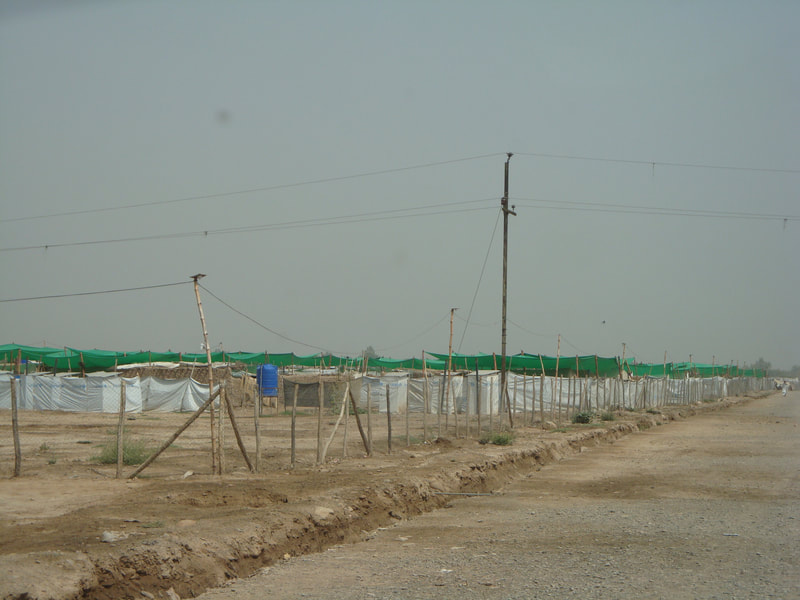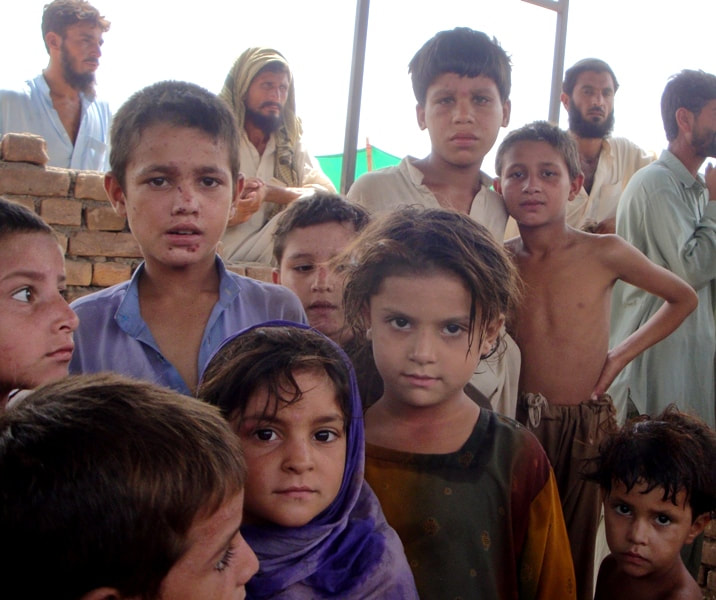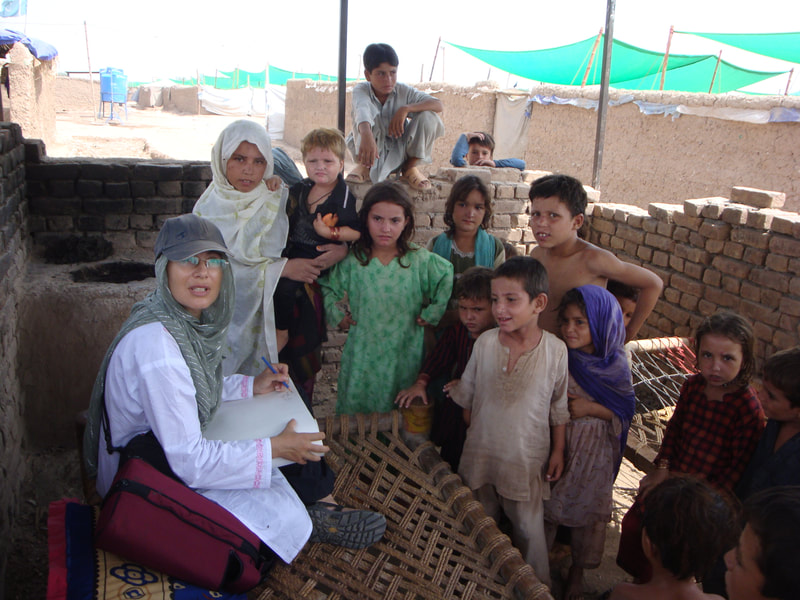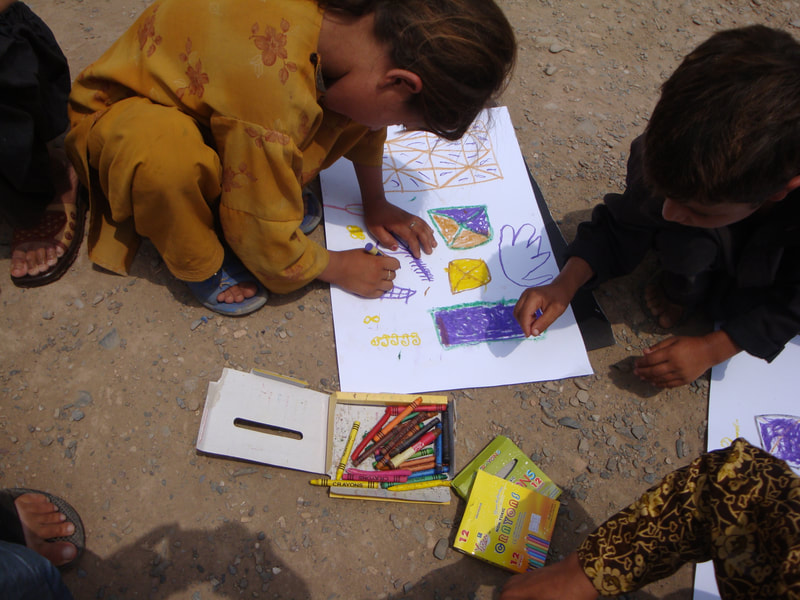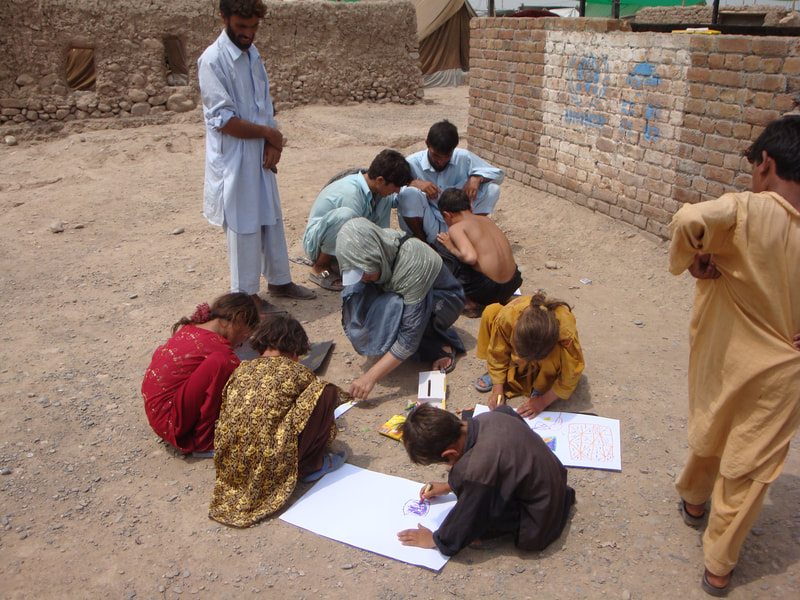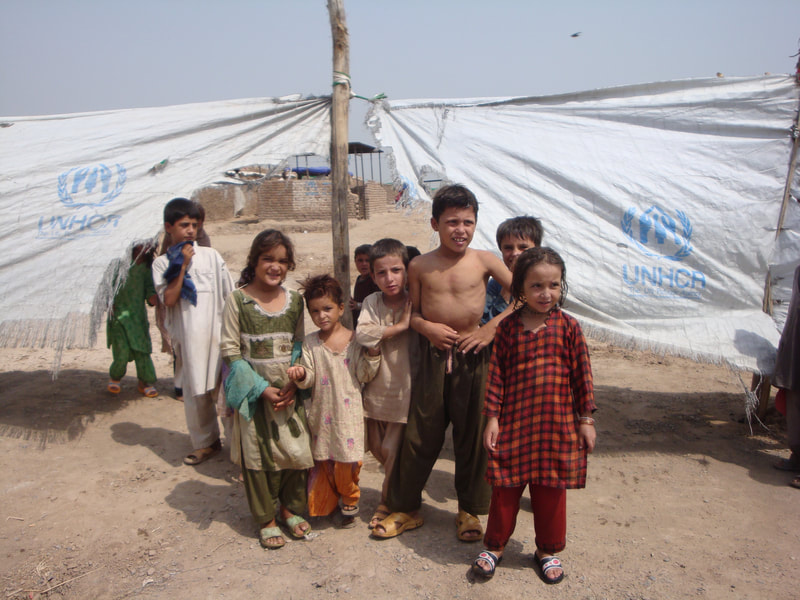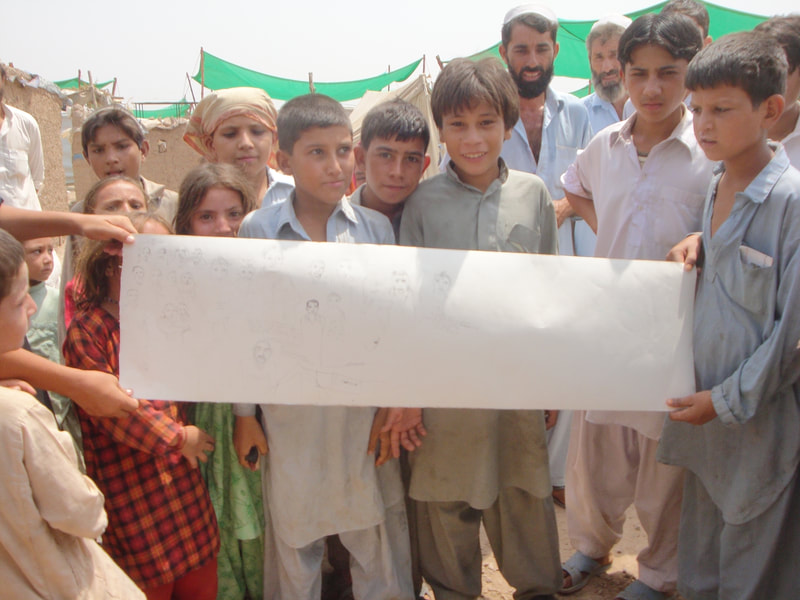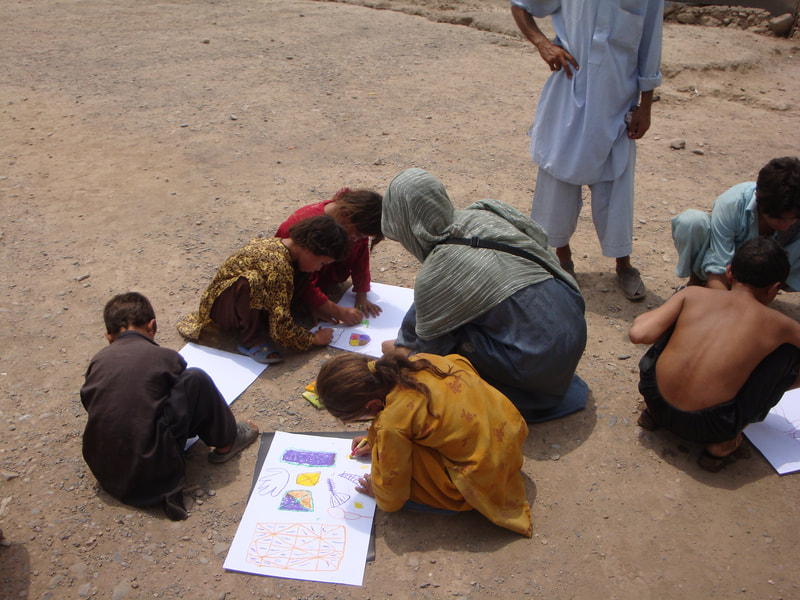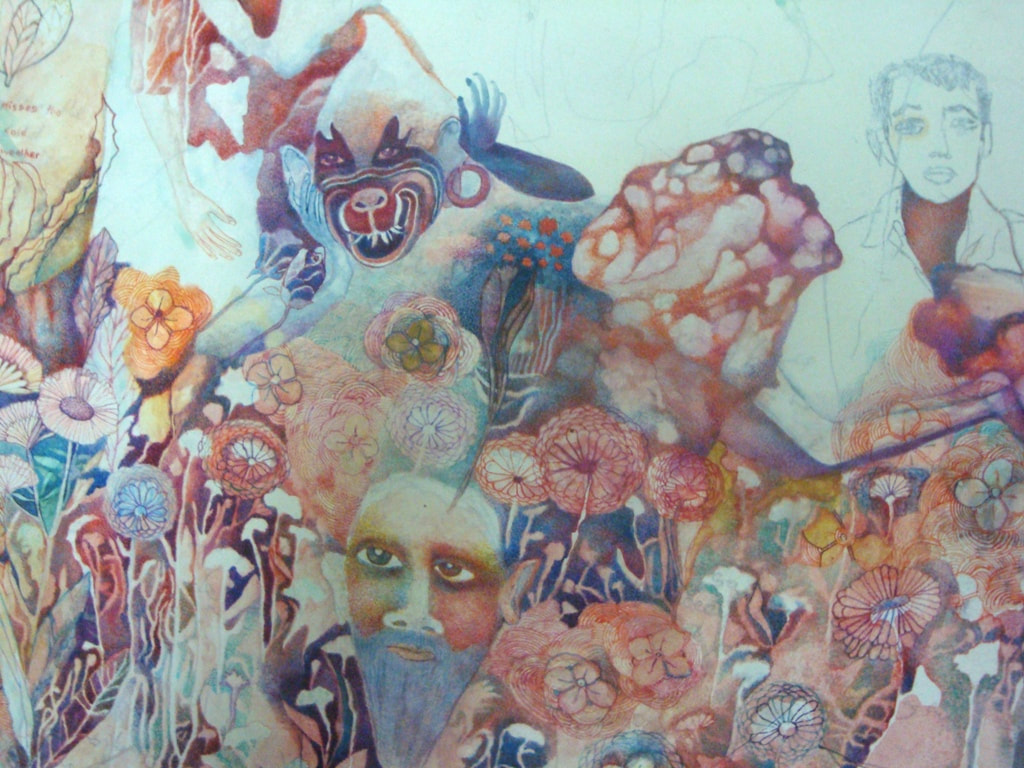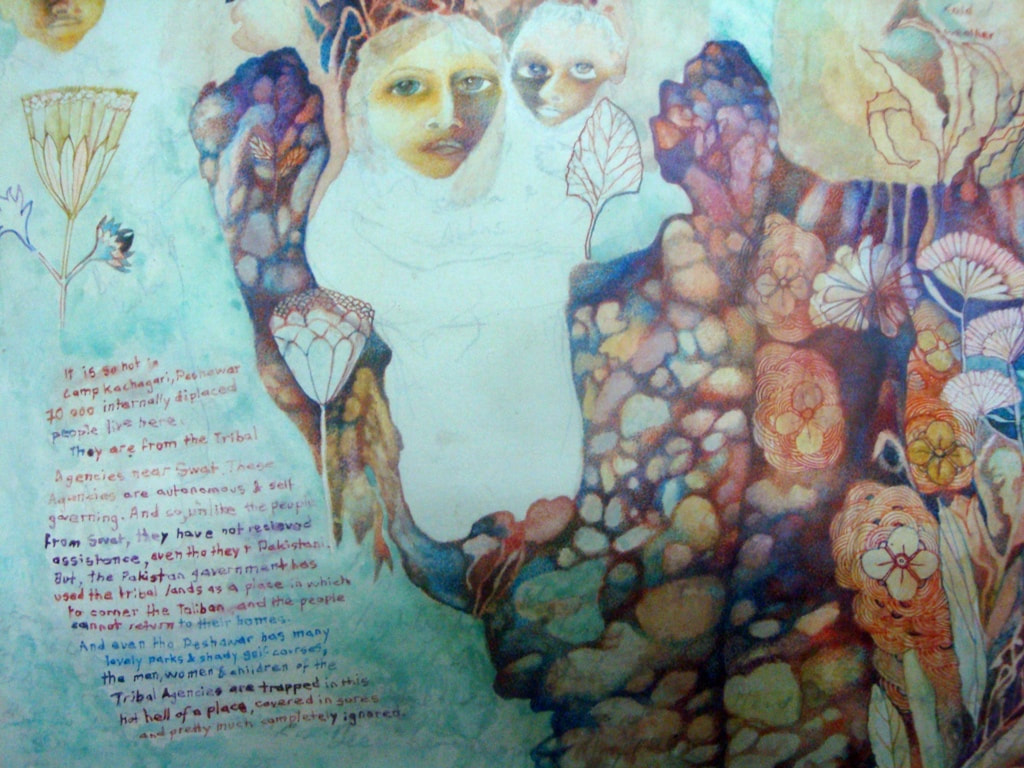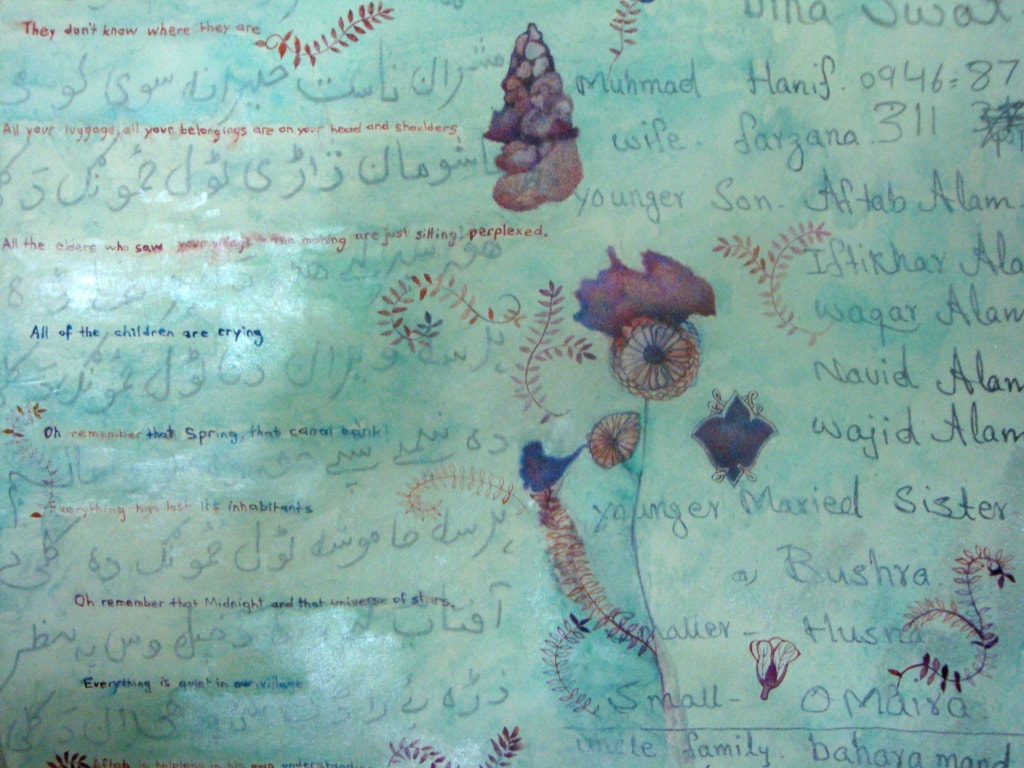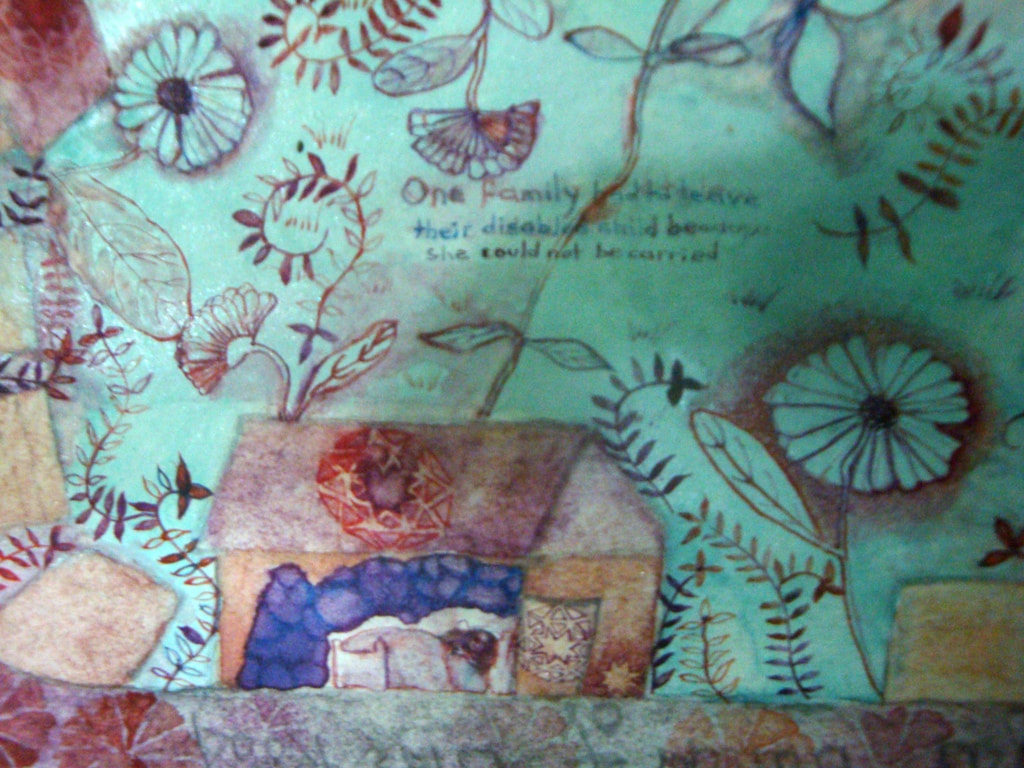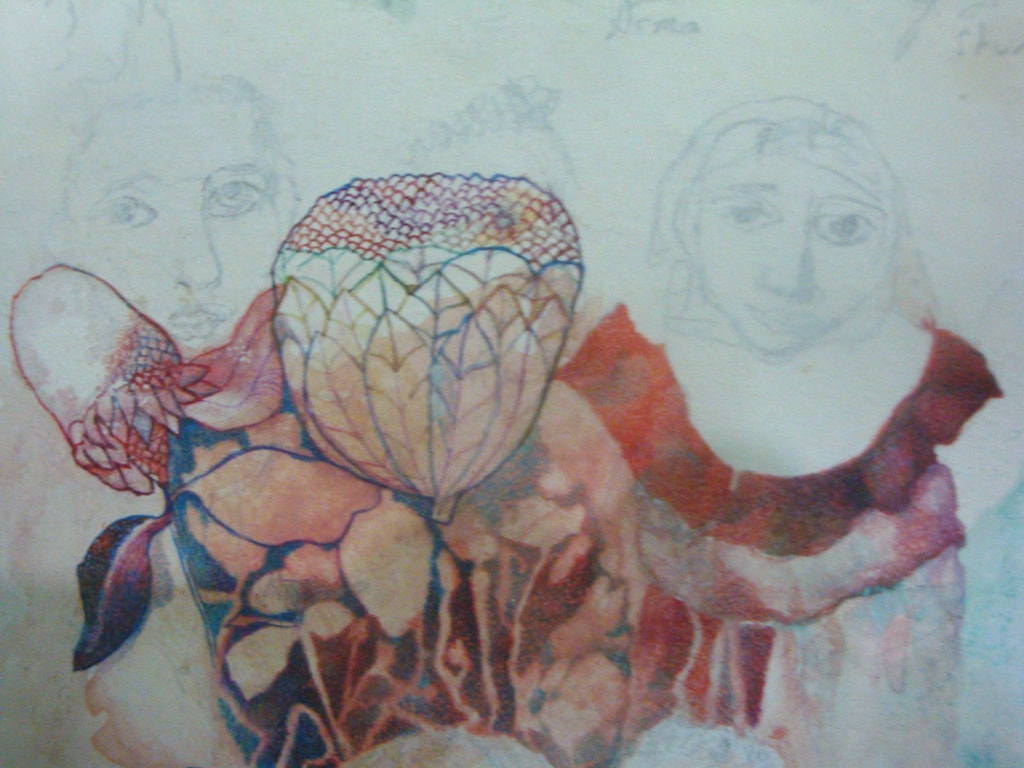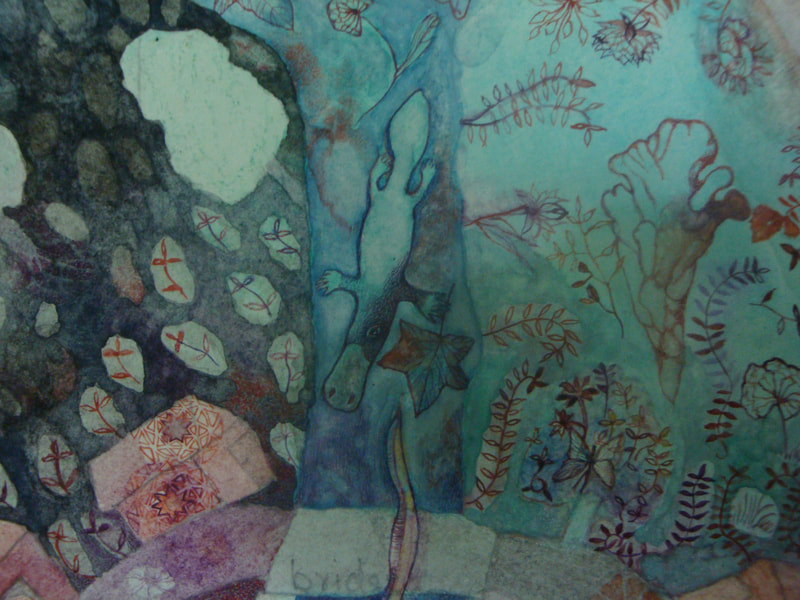2009
Lost Swat scroll
Lost Swat scroll
Drawing workshop at Camp Kachagari 2009. Photography by the artist and courtesy of Human Rights Commission of Pakistan.
In 2009 the US-lead drone attacks on the tribal areas bordering Pakistan and in the province of Swat, that were said to be aimed at driving out Taliban cells, killed and terrorised thousands of civilians. Fleeing their destroyed villages, seventy thousand refugees from the tribal areas came to be contained in Camp Kachagari on the outskirts of Peshawar.
I had come to Pakistan to learn more about miniature painting. But in light of the events, I wanted to go to camps, to document through drawing, and do something in my capacity as an artist. I went round NCA asking for donations of paper and crayons. With the help of NCA's Director and the Human Rights Commission of Pakistan I went to Peshawar. On its outskirts was Camp Kachagari and 70, 000 refugees from the tribal villages bordering Afghanistan.
Peshawar had green shady golf courses and public parks and so the refugee camp which looked like a desert, came as a shock. It was summer, and over fifty degrees. Used to the cooler mountain climates, the people from the mountains suffered with heat rashes and boils. It was a miserable, austere camp without enough water for bathing.
I wondered why conditions were so poor. Aid was apparently pouring in but not here. I learned that unlike refugees from Swat, the tribal peoples received no assistance because in 1947 their ethnicity and disproportionate representation in the predominantly Punjabi-led government lead them to choose semi autonomy in governance. These small powers in their own villages however came at the cost of accessing state welfare and emergency assistance.
When the drones came, refugees from Swat received aid and billeting in villages across Khyber Pashtunistan but the people from the tribal areas were herded into places like Kachagari and abandoned.
Lost Swat scroll developed in the camp. I made drawings of the children as they worked with the materials I'd brought. Long after the grownups had fallen back into their tents the children kept on. It was fifty one degrees and the crayons were melting but it didn't matter. They drew airplanes and bombs falling, villages and drones, and wounded people, flowers, and beautiful patterns, rivers, birds, and trees.
After a few days my permit to the camp was cancelled. I was told it might be I was witnessing conditions officials would rather conceal.
I went to a village near Mardan where a friend and his family were billeting Swat refugees. We collaborated on the scroll that had begun in Kachagari. In one place a twelve year old boy wrote this poem:
Your hujras, the guest compounds, are empty.
The people of your village, they don't know where they are.
All your luggage, your belongings are on your head and shoulders.
All the elders who saw your village in the making are just sitting perplexed.
All of the children are crying.
Oh remember that spring, that canal bank?
Everything has lost its inhabitants.
Oh remember that midnight, that universe of stars.
Everything is quiet in our village.
Lost Swat scroll. Details. Collaborative writing, watercolour, paper.
